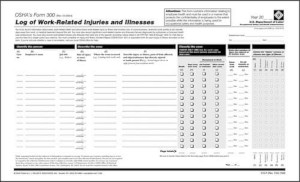Recordkeeping

Recordkeeping is essential to the program's success. Good records help employers determine the severity of the problem, evaluate methods of hazard control and identify training needs. Records can be especially useful to large organizations and for members of a business group or trade association who "pool" data. Records of injuries, illnesses, accidents, assaults, hazards, corrective actions, patient histories and training can help identify problems and solutions for an effective program.
Records that should be kept on file by an organization include the OSHA Log of Work-Related Injury and Illness (Form 300), medical reports, and supervisors' reports of work injury, records of incidents of abuse, verbal attacks or aggressive/threatening behavior, and information on patients' charts of a history of past violence, drug abuse, or criminal activity (OSHA, 2016).